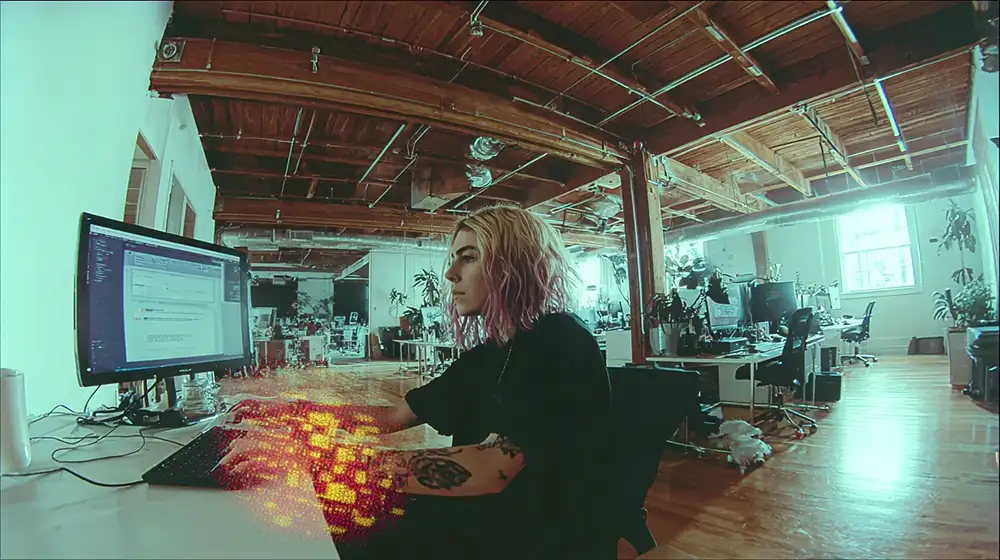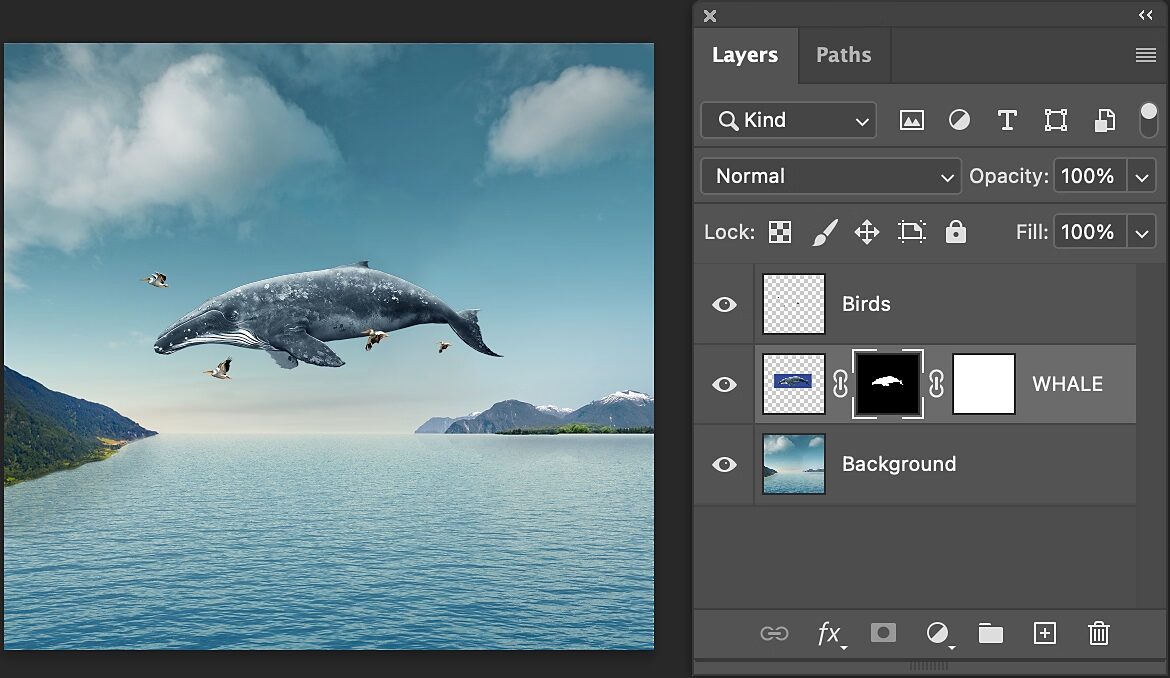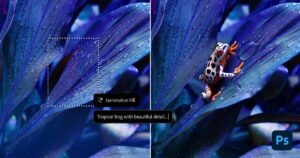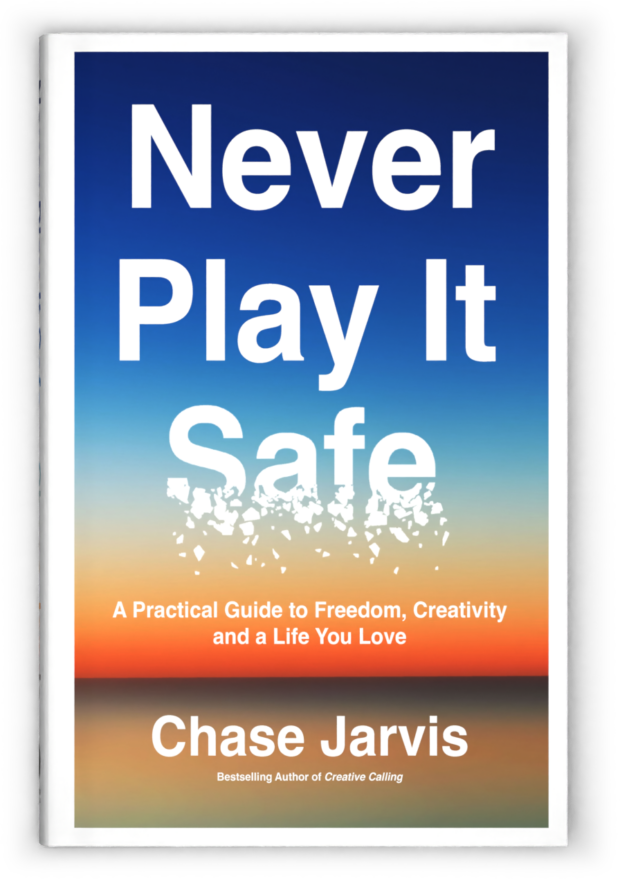
The conversation around AI and creative work is deafening. It’s a mix of doomsday predictions and utopian fantasies, with most of it missing the point entirely. The real shift isn’t about replacement; it’s about a fundamental change in our role as creative professionals. Nowhere is this more apparent than inside Adobe Photoshop. For decades, it’s been the undisputed hub of our digital craft, a tool for meticulous, hands-on manipulation.
But that’s changing. Photoshop is evolving from a straightforward editor into a sophisticated orchestration platform, a command center where you direct a suite of powerful AI tools. For those willing to adapt, this isn’t a threat—it’s the single biggest opportunity to elevate your work and redefine your value.
Photoshop + AI = a whole new app
For years, mastering Photoshop meant mastering its manual tools: the Pen Tool, Clone Stamp, complex masking, and arcane keyboard shortcuts. It was about painstaking, pixel-by-pixel control. While that foundation remains critical, the software’s center of gravity has shifted. The introduction of Adobe Firefly and integrated AI features like Generative Fill and Generative Expand isn’t just another set of tools; it’s a new operational layer that changes the very nature of the application.
From Manual Editor to Creative Hub
Think of the old Photoshop as a darkroom. You had your enlarger, your chemicals, your paper—a set of tools that required direct, physical manipulation to produce a final image. The new Photoshop is more like a production studio. You’re still the director, but now you have a team of highly-skilled, specialized assistants at your command. These assistants are the generative AI models. Your job is no longer just about doing the work, but about efficiently directing the work. The application is becoming a hub where you bring in assets—photos you shot, elements generated in Midjourney, textures from DALL-E 3—and use Photoshop’s powerful compositing and AI tools to orchestrate a final, cohesive piece.
The Rise of Generative Tools
The key difference is the source of the pixels. Before, every pixel in your document was either captured by a camera or created by your hand. Now, you can conjure pixels from a text prompt. Need to extend a background? Generative Expand does it in seconds, analyzing the existing image to create a seamless extension. Need to remove a distracting element and rebuild what was behind it? Generative Fill doesn’t just clone nearby pixels; it understands the context of the scene and generates a completely new, logical replacement. This isn’t about making things easier; it’s about making new things possible and freeing up your creative energy for higher-level decisions.

The Pro’s New Job: From Creator to Orchestrator
This shift redefines what it means to be a “power user.” The new creative professional isn’t just a technician with flawless pen tool skills. They are an orchestrator, a creative director who guides and refines the output of multiple systems to achieve a singular vision. Your value no longer comes solely from your ability to execute a task, but from your ability to define a vision and use these new tools to bring it to life with precision and taste.
What “Orchestration” Actually Means
Orchestration is the art and science of combining multiple elements, often from different sources, into a unified whole. In this context, it means:
- Vision & Direction: Clearly defining the desired outcome. This is where your human experience, taste, and understanding of composition, light, and emotion are irreplaceable.
- Asset Generation: Using the right tool for the job. This might mean starting with a photograph, generating a base image in Midjourney for its stylistic flair, or using Stable Diffusion for specific concepts.
- Integration & Compositing: Bringing these elements into Photoshop and using its core toolset—layers, masks, adjustment layers, and blending modes—to seamlessly combine them.
- Refinement & Finishing: Applying your expert eye to guide the AI, correct its imperfections, and add the final polish that separates professional work from amateur experiments.
Example Workflow: Combining Midjourney and Photoshop
Here’s a practical example. A commercial client wants an image of a new sneaker in a futuristic, neon-lit cityscape. The budget doesn’t cover a location scout and shoot in Tokyo.
- Old Workflow: Spend days or weeks searching stock sites for the perfect background plate, then meticulously mask the studio-shot sneaker, and spend hours trying to match the lighting and color grading.
- New Workflow:
- Generate the Environment: In Midjourney, use a prompt like
/imagine prompt: grimy, rain-slicked alley in a futuristic cyberpunk city, neon signs reflecting in puddles, cinematic, photorealistic, 8k --ar 16:9. Iterate a few times to get the perfect mood and composition. - Bring it into Photoshop: Import the best Midjourney generation into Photoshop.
- Extend the Canvas: Use Generative Expand to build out the scene, giving you more flexibility for cropping and composition.
- Integrate the Product: Place the studio shot of the sneaker on a new layer.
- Use Generative Fill for Realism: This is where the magic happens. Mask the area around the base of the sneaker and use a Generative Fill prompt like “realistic shadow on wet pavement, neon light reflection.” Then, select a part of the sneaker’s sole and use another prompt like “reflection of a blue neon sign.” You’re not just faking it; you’re directing the AI to build realistic interactions between your elements.
- Final Polish: Use Curves, Color Balance, and manual dodging and burning to unify the image and make the final creative decisions.
- Generate the Environment: In Midjourney, use a prompt like
This workflow is faster, more flexible, and produces a result that would have been prohibitively expensive before. That is the power of orchestration. It’s about bravely stepping into new territories, a necessary skill for any creator looking to grow. To go deeper on why pushing these boundaries is essential, check out this free chapter from Chase Jarvis’ book, Never Play It Safe. It’s a powerful look at why your biggest creative breakthroughs happen when you move beyond your comfort zone.
Essential Skills for the AI-Powered Creative
The tools may be new, but the principles of good creative work are not. In fact, they’re more important than ever. Your technical skills need to evolve, but your artistic foundation is what will set you apart.
Prompt Engineering is Just the Start
Everyone is talking about prompt engineering. Yes, it’s a skill, but it’s the most basic one. Knowing how to write a good prompt is like knowing how to set your aperture. It’s a prerequisite, not the whole game. The real skill is “prompt iteration”—the ability to analyze an AI’s output, diagnose why it isn’t working, and refine your prompt or your process to get closer to your vision. It’s a feedback loop between your creative brain and the machine.
Mastering Masking and Compositing
If you thought AI would let you get lazy with your fundamentals, you’re wrong. Layer masking, selections, and compositing are now more critical than ever. The output from generative tools is rarely perfect. You’ll need to mask out artifacts, combine the best parts of multiple generations, and seamlessly blend AI-created elements with photographic ones. The “Select Subject” and “Object Selection” tools have become incredibly accurate, but they are the starting point. Mastery of the Pen Tool, channel masks, and luminosity masks is what will allow you to take a 90% good AI generation and turn it into a 100% perfect final image.
Developing Your Critical Eye
In a world of infinite content, taste is everything. The AI can generate an image, but it can’t tell you if it’s good. It can’t understand a client’s brand, a campaign’s strategic goals, or the subtle emotional resonance that makes an image impactful. Your most valuable asset is your developed aesthetic, your “critical eye.” You need to be the ultimate arbiter of quality, curating and refining the flood of options the AI provides. This means being a student of your craft: study art, photography, design, and film. Understand what makes a composition work and why certain lighting evokes a specific feeling. The AI is a tool; you are the artist.
The Future of the Creative Workflow
We are moving toward a future where AI acts as a tireless, infinitely skilled junior assistant. It will handle the tedious, time-consuming parts of the job—complex selections, background extensions, object removal—freeing you to focus on the things that matter: concept, story, and emotion.
AI as Your Junior Assistant
Imagine briefing your assistant: “Give me five options for this background, make it a bit more dramatic, remove the scaffolding from that building, and show me how this product would look with a warmer light source.” This is what you can now do with Photoshop. This partnership allows you to explore more creative options in less time. It demolishes technical barriers, letting you execute ideas that were previously impractical. The bottleneck is no longer your technical ability, but the quality and clarity of your vision.
Where to Focus Your Energy Now
Don’t get distracted by every new AI tool that launches. Focus on the core platform you already know: Photoshop. Master its new generative features, but more importantly, double down on your core skills. Perfect your understanding of light, color, and composition. Become an expert at masking and compositing. Spend your time building a deep well of visual references and refining your personal taste. The tools will continue to change, but a strong creative vision and the fundamental skills to execute it will always be in demand.

Summary
Stop thinking of Photoshop as just a photo editor, and stop thinking of AI as a threat. The landscape has changed. Photoshop is now a powerful orchestration platform, and your new job is to be the creative orchestrator. Your value is no longer just in your manual skill, but in your vision, your taste, and your ability to direct these incredible new tools to create work that is uniquely yours. Embrace your role as the director, not just the technician. Focus on strengthening your creative vision and mastering the core principles of your craft. That is how you will not just survive, but thrive in this new era.
Building a career that can withstand these kinds of seismic shifts is about more than just mastering a single piece of software. It’s about building a resilient, creative life. For a deeper dive into creating a system for success, check out the free 7-day email course, Seven Levers For Life. It’s a practical guide to building a life you love, centered on freedom and creativity.













